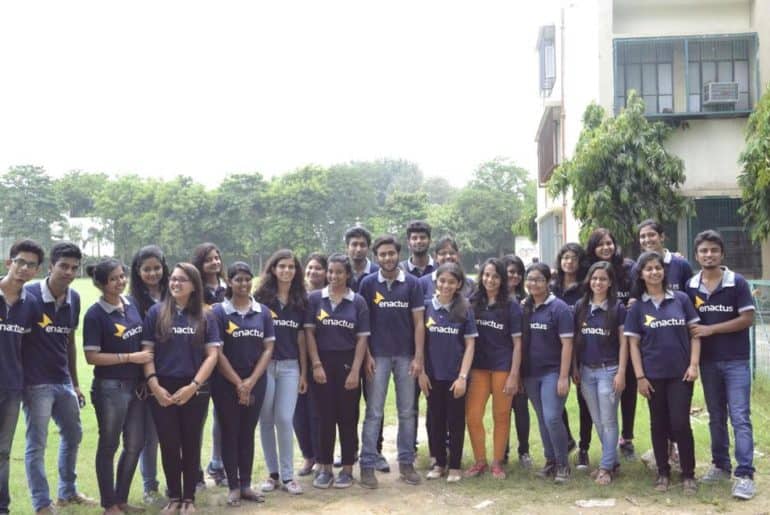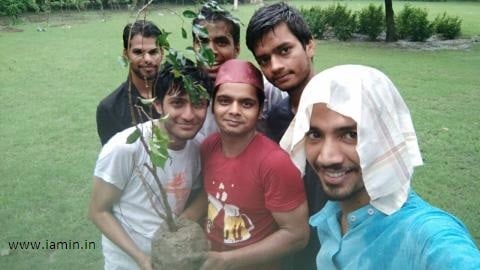Professor Rajeev Gupta of Department of Chemistry, University of Delhi was honored with the Bronze Medal (2016) by the Chemical Research Society of India (CRSI) for his contributions to research in Chemistry. The CRSI was founded by Bharat Ratna Prof. C. N. R. Rao in 1999 and is the largest chemical society of the country. The society includes members who participate in the study, practice, teaching and promotion of chemistry.
Professor Gupta works on several interdisciplinary fields such as coordination chemistry, bio-inorganic chemistry, supramolecular chemistry, designed materials, catalysis, and inorganic medicinal chemistry. Professor Gupta has published research papers in the leading international journals of scientific repute and his work has been widely cited. “The research in our laboratory is targeted to understand the molecular and electronic structure as well as the application and function of coordination complexes via an iterative synthetic approach”, states Rajeev Gupta’s group.
His projects include work on “Development of indicators for anthropogenic, environmental and chemical stress on urban ecosystem: A study of aquatic and terrestrial ecosystems of Yamuna river catchment from National Capital Region (Delhi)”, funded by the University of Delhi under the Department of Science and Technology- Promotion of University Research (DST-PURSE ). They also include “Scientific Excellence Program and Coordination Complexes as the Building Blocks: Supra-molecular Organization and Catalysis” funded by the Department of Science and Technology (DST).
Professor Gupta has also delivered several talks for various national and international journals and his research is supported by several national funding agencies such as Department of Science and Technology (DST), Science and Engineering Research Board (SERB), Council of Scientific and Industrial Research (CSIR), and University Grant Commission (UGC).
Image credits: du.ac.in
Shefali Bharati
[email protected]















 Gotom Gandkak from SRCC performing for Dance-off, the solo and duet competition at Moksha, NSIT | Image Credits- Chirag Sharma[/caption]
The dance competition was followed by Mr. and Ms. Moksha. Students from all the colleges could come and participate in this competition. The first round was Lip-syncing competition. The participants had to introduce themselves and lip-sync with a song of their choice. The second round consisted of two parts- The Questionnaire round and the Talent round. Bhavika was the first performer of the competition. It was judged by Kanika Katyal, HT City editor, Suparna Chakrobarty, Monica Meena and Joginder Kumar, a famous wrestler who participated in Commonwealth Games. Gaurav Tyagi from Shivaji College became Mr. Moksha and Palak Makkar from Amity School of Technology and Engineering became Miss Moksha. The runners-up of the competition were Kushal Jasoriya from BITS Pilani and Khushboo Tanwar from CVS.
[caption id="attachment_31538" align="aligncenter" width="332"]
Gotom Gandkak from SRCC performing for Dance-off, the solo and duet competition at Moksha, NSIT | Image Credits- Chirag Sharma[/caption]
The dance competition was followed by Mr. and Ms. Moksha. Students from all the colleges could come and participate in this competition. The first round was Lip-syncing competition. The participants had to introduce themselves and lip-sync with a song of their choice. The second round consisted of two parts- The Questionnaire round and the Talent round. Bhavika was the first performer of the competition. It was judged by Kanika Katyal, HT City editor, Suparna Chakrobarty, Monica Meena and Joginder Kumar, a famous wrestler who participated in Commonwealth Games. Gaurav Tyagi from Shivaji College became Mr. Moksha and Palak Makkar from Amity School of Technology and Engineering became Miss Moksha. The runners-up of the competition were Kushal Jasoriya from BITS Pilani and Khushboo Tanwar from CVS.
[caption id="attachment_31538" align="aligncenter" width="332"]

